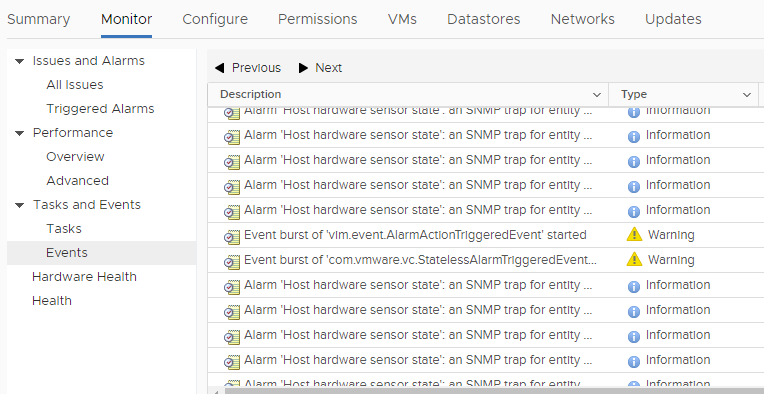

- #MINIMUM REQUIREMENTS FOR VMWARE ESXI 6.7 INSTALL#
- #MINIMUM REQUIREMENTS FOR VMWARE ESXI 6.7 SERIAL#
- #MINIMUM REQUIREMENTS FOR VMWARE ESXI 6.7 UPGRADE#
- #MINIMUM REQUIREMENTS FOR VMWARE ESXI 6.7 SOFTWARE#
You should reconfigure /scratch to use a persistent datastore following the installation.įor environments that boot from a SAN or use Auto Deploy, you need not allocate a separate LUN for each ESXi host. If no local disk or datastore is found, /scratch is placed on ramdisk. In Auto Deploy installations, the installer attempts to allocate a scratch region on an available local disk or datastore. Use a high-quality USB flash drive of 16 GB or larger so that the extra flash cells can prolong the life of the boot media, but high-quality drives of 4 GB or larger are sufficient to hold the extended coredump partition. The extra space is used for an expanded coredump partition on the USB/SD device. Although a 1GB USB or SD device suffices for a minimal installation, you should use a 4GB or larger device. After the installation or upgrade, you should reconfigure /scratch to use a persistent datastore. If no local disk or datastore is found, /scratch is placed on the ramdisk. When installing or upgrading on USB or SD devices, the installer attempts to allocate a scratch region on an available local disk or datastore.

To reconfigure /scratch, see Set the Scratch Partition from the vSphere Web Client.ĭue to the I/O sensitivity of USB and SD devices, the installer does not create a scratch partition on these devices. For best performance and memory optimization, do not leave /scratch on the ESXi host ramdisk. You can reconfigure /scratch to use a separate disk or LUN. If a local disk cannot be found the scratch partition, /scratch, is on the ESXi host ramdisk, linked to /tmp/scratch. If a smaller disk or LUN is used, the installer attempts to allocate a scratch region on a separate local disk. When booting from a local disk, SAN or iSCSI LUN, a 5.2-GB disk is required to allow for the creation of the VMFS volume and a 4-GB scratch partition on the boot device. Installing ESXi 6.5 or upgrading to ESXi 6.5 requires a boot device that is a minimum of 1 GB.
#MINIMUM REQUIREMENTS FOR VMWARE ESXI 6.7 UPGRADE#
Storage Requirements for ESXi 6.5 Installation or Upgrade Starting with vSphere 6.5, VMware Auto Deploy supports network booting and provisioning of ESXi hosts with UEFI.ĮSXi can boot from a disk larger than 2 TB if the system firmware and the firmware on any add-in card that you are using support it. With UEFI, you can boot systems from hard drives, CD-ROM drives, or USB media. VSphere 6.5 supports booting ESXi hosts from the Unified Extensible Firmware Interface (UEFI).
#MINIMUM REQUIREMENTS FOR VMWARE ESXI 6.7 SOFTWARE#
For Software Fibre Channel over Ethernet (FCoE), see Installing and Booting ESXi with Software FCoE. To use the SATA CD-ROM device, you must use IDE emulation mode.įor a list of supported storage systems, see the VMware Compatibility Guide at. Note: You cannot connect a SATA CD-ROM device to a virtual machine on anĮSXi 6.5 host. These disks are not used as a scratch partition by default because they are seen as remote. SATA disks are considered remote, not local.
#MINIMUM REQUIREMENTS FOR VMWARE ESXI 6.7 SERIAL#
For Serial ATA (SATA), a disk connected through supported SAS controllers or supported on-board SATA controllers.SCSI disk or a local, non-network, RAID LUN with unpartitioned space for the virtual machines.For a list of supported network adapter models, see the VMware Compatibility Guide at. One or more Gigabit or faster Ethernet controllers.To support 64-bit virtual machines, support for hardware virtualization (Intel VT-x or AMD RVI) must be enabled on 圆4 CPUs.It is recommended to provide at least 8 GB of RAM to run virtual machines in typical production environments. ESXi 6.5 requires a minimum of 4 GB of physical RAM.ESXi 6.5 requires the NX/XD bit to be enabled for the CPU in the BIOS.For a complete list of supported processors, see the VMware compatibility guide at. This includes a broad range of multi-core processors. ESXi 6.5 supports 64-bit x86 processors released after September 2006.ESXi 6.5 requires a host machine with at least two CPU cores.For a list of supported platforms, see the VMware Compatibility Guide at.
#MINIMUM REQUIREMENTS FOR VMWARE ESXI 6.7 INSTALL#
To install or upgrade ESXi, your hardware and system resources must meet the following requirements:

Make sure the host meets the minimum hardware configurations supported by ESXi 6.5.


 0 kommentar(er)
0 kommentar(er)
